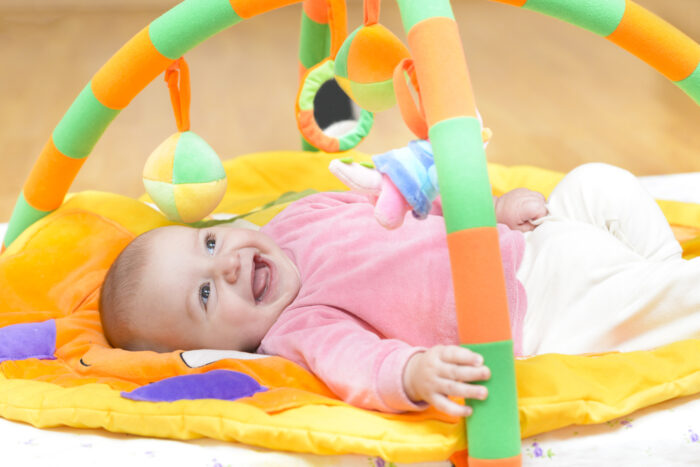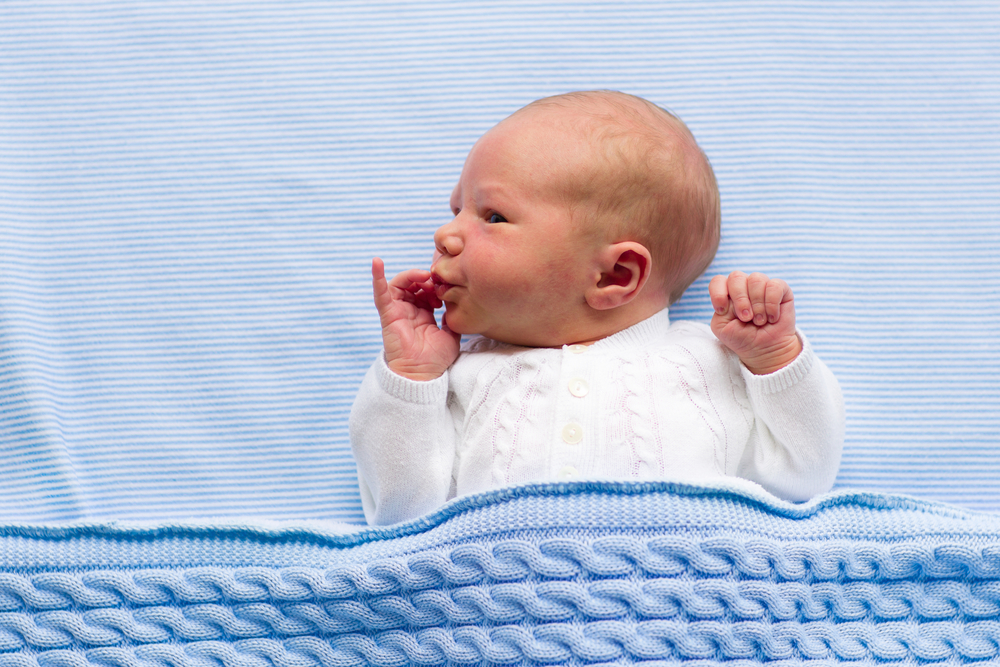One of the most difficult things for me as a new mum was knowing when my baby was tired and when to put her down into her cot for sleep. This was before I became a midwife or maternal and child health nurse (MCHN). Unfortunately, early on she usually fell asleep feeding and then I would ever so carefully transfer her into the cot, and she would wake 20 minutes later, screaming.
By the time she was 6 weeks old I was completely exhausted, and I attended a Sleep Day Stay Program. A MCHN explained tired signs which are also known as sleep cues and our lives changed that day. I had never heard of tired signs, but I had noticed that she would get very grizzly at times. I didn’t realise she was trying to tell me she was tired.
I had never put her into her cot awake, for some reason that thought had never crossed my mind. The nurse said to look for some of the tired signs and then wrap her and put her into the cot. The nurse and I did this together and within 5 minutes she had fallen asleep with just some occasional grizzling and wriggling and no crying. It was the first time she had slept for more than 2 hours since birth! I remember feeling silly that something so easy worked but really, I was extremely grateful. I started to notice her tired signs and was shocked that many of them had gone unnoticed until that day.
This and many other experiences led me to become a midwife and MCH Nurse so that I could support other new parents to understand and ultimately enjoy their baby.

Many new parents don’t know about baby tired signs and how important they are and what to look for. Below is a list and these become easier to notice as your baby gets older.
Tired signs/sleep cues:
- Jerky movements
- Crying, grizzling
- Fist clenching
- Turning face away, dazed, cross eyes, looking at wall
- Yawning
- Coughing/hiccups
- Back arching
- Squirming/kicking aggressively
- Vomiting/possiting (small vomit)
- Red around eyes/eyebrows
- Hands to mouth
- Pulling at ears
- Dark circles under eyes
- Facial grimacing, frowning, looking concerned
- Clinginess
- Becoming quiet, not playing
- Sucking fingers/thumb – trying to self soothe
- Long blinking
When your baby is in your arms it is difficult to notice many of these tired signs. So, it is good during the day to give your baby some play time on the floor to have a kick around and observe their behaviour. In the first few weeks this may just be on the change table while you’re talking to them and changing their nappy. You may already spot a few tired signs as at this age they often wake and feed and then show tired signs within 1-1.5 hours and are ready to go back to sleep.

After 1-1.5 hours of awake time and you will usually see these signs in a newborn baby. You are looking for a number of different tired signs, not just one before getting them ready for sleep. Some of their signs can be subtle so you will become better at noticing them.
Make sure your baby is fed, changed and comfortable. Give some quiet time, wrap them up or use a swaddle bag and put them into a cot or bassinet on their back. Give them a little pat or stroke their face and then walk away and give an opportunity to drop off to sleep.
If you miss the early tired signs it gets harder to help them get to sleep as they become overtired. This might be a time to take them for a walk in the pram, rock them in your arms or use another method that helps them get off to sleep.
Most importantly, if you need some support with noticing tired signs and helping your baby and yourselves to get more sleep please ask for help. Your maternal and child health nurse can help and recommend other more intense sleep services.









